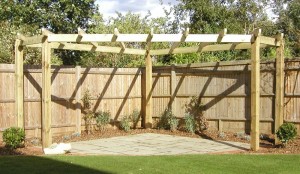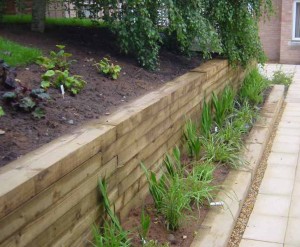Summertime is often considered the perfect time to get outside and enjoy your yard. Whether you own 40 acres or 4 meters of land, the warmer months offer ideal opportunities for green thumbs to get down in the earth and for non-gardeners to soak in the sun. However, summer can also be a bit of a challenging time for lawn owners, as some will undoubtedly experience prolonged dry spells without natural rain fall—an experience that could very likely turn their lawns into dry, brown carpets. With this is mind, there are fortunately several ways to ensure that you summer landscaping needs are optimally met.
First of all, reducing overall lawn area is an environmentally friendly action that will make your landscaping needs much easier during the summer months, as well as during the other nine months of the year. Modern landscaping trends lean towards a higher employment of rocks, shrubbery, and bark dust to fulfill the former aesthetic purpose of lawns. This trend rose primarily from homeowners seeking to have more environmentally friendly lifestyle practices; since these lawn replacements require minimal extra watering, all of them are much “greener” than traditional lawn yards.
Secondly, consider using more native plants in your landscaping scheme. Unlike transplanted grasses, native plants can typically survive during the dryer summer months with minimal (if any) extra watering. Consult your local nurseries to inquire about native groundcovers that do well all seasons of the year; many such groundcovers are actually very attractive, in addition to being excellent alternatives to grassy lawns that can’t survive the summer months without frequent watering.
Finally, if you must water your lawn (and other plants), be sure to do so at the ideal times. While automatic sprinkler systems are certainly superior in terms of convenience, choosing to have a watering system that allows you full control over your watering schedule is optimal. Such a watering system should be able to be easily turned off if rain is predicted in the forecast. Additionally, be sure not to water anytime that your landscaping is in direct sunlight; not only will direct sunlight cause the water to evaporate faster (and thus not be as beneficial to the plants you’re trying to provide water to in the first place), but choosing to water at this time could cause plants to feel “shocked” due to the extreme temperature difference between the water and the sunlight.
Posted in News


